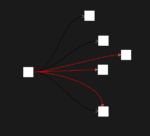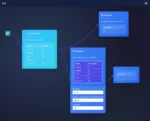
by tyler garrett | Jun 12, 2025 | Data Processing
In the intricate world of data management, the manner by which you structure your information can make or break the efficiency of your technology stack. As decision-makers strive to harness the power of their growing data assets, understanding variable-length and fixed-width record storage methods becomes paramount. It’s an intersection of innovation and pragmatism—where legacy systems coexist alongside modern data engineering practices, and navigating this balance can yield remarkable analytical outcomes. In this guide, we’ll unpack the concept of variable-length records, explore how they function within traditionally fixed-width architectures, and ultimately demonstrate how intelligent data solutions can streamline your operations and enhance strategic decision-making.
Understanding Fixed-Width and Variable-Length Record Structures
At the foundation of data storage lie two critical concepts—fixed-width and variable-length records. Fixed-width records assign uniform space allocation across all fields, regardless of actual data length, making it straightforward to calculate storage requirements and rapidly access data. This structure, however, comes at the cost of efficiency, as empty spaces accumulate due to unused field slots, especially if data varies significantly in size. Historically, fixed-width records were the bedrock of database schemas due to their ease of managing data alignment and fast read performance within legacy systems.
Conversely, variable-length records flexibly adjust their storage space according to the actual data size. This adaptability minimizes waste, allows for smoother scalability, and dramatically improves storage efficiency—a crucial advantage in an era where data volumes continually escalate. However, implementing variable-length records within systems accustomed to fixed configurations involves carefully designed integration strategies focused on compatibility and efficient data access.
At Dev3lop, our experts frequently help businesses evaluate their existing data storage strategies. Our advanced analytics consulting services empower organizations to optimize their database infrastructure, ensuring they harness technology’s full potential for data-driven initiatives.
The Advantages of Embracing Variable-Length Records
Opting for variable-length records rather than maintaining a rigid fixed-width approach can significantly enhance your operational capabilities. By aligning storage needs precisely to data size, organizations experience impactful resource conservation—reduced disk usage and lower data transmission volumes, resulting in cost savings and higher efficiency. Variable-length records also expedite processing tasks, smaller storage footprint means servers can retrieve and manipulate datasets more rapidly, enhancing end-to-end analytics processes that rely on speedy data ingestion.
Furthermore, handling diverse datasets—such as logs, unstructured text, and user-generated content—becomes significantly more straightforward with variable-length storage. The dynamic nature of modern digital data demands responsive strategies, and variable-length records can effectively accommodate unpredictable growth and variety. As businesses increasingly leverage advanced analytical techniques, like those presented in our detailed breakdown on enabling data-driven decision-making, using the right data storage methods ensures analytics workloads execute efficiently. Such adaptability improves real-time analytics integration, allowing businesses to strategically pivot based on emerging data-driven insights.
Our team at Dev3lop understands the importance of optimizing your data foundation. For instance, our insights on tools and technologies used for data analytics identify storage methods as foundational to effective data performance—highlighting why selecting correct data record structuring techniques influences future analytical capabilities.
Integrating Variable-Length Records into a Fixed-Width Environment: Challenges and Solutions
Navigating the shift from a traditional fixed-width storage method to embracing the variability of modern flexible datasets requires careful consideration and planning. One primary challenge emerging is the complexity around indexing and retrieval algorithms—methods traditionally optimized for fixed-width records become more intricate when handling variability. Navigating these complexities demands highly skilled data professionals, and our breakdown of the differences between a data engineer and a data analyst clarifies what skillsets your organization may require to smoothly implement variable-length data structures.
Key solutions to facilitating this integration include implementing strategic metadata management, enhancing your data indexing schemes, and using specialized database management systems geared toward schema flexibility. Adopting robust metadata strategies ensures that records remain easily discoverable, properly indexed, and retrievable despite their variable dimensions. Additionally, building effective data management frameworks, as explained in our guide on streamlined database management best practices, will assist organizations in adapting existing infrastructure seamlessly to newer, more flexible data standards.
At Dev3lop, our data architects leverage tailored optimization approaches to assist client enterprises in effectively integrating these modern methodologies, maximizing the strengths of legacy systems while introducing innovative efficiencies.
Real-Time Analytics & Optimization through Variable-Length Storage Adoption
Real-time analytics depend heavily on efficient storage and retrieval, making variable-length record management enormously beneficial. By reducing storage and transmission overhead, variable-length records facilitate the rapid analytical processing essential to meet today’s increasingly real-time analytics demands. Our research, such as the article examining real-time dashboard performance benchmarks (WebGL vs Canvas), underscores how critical optimized data structures are in delivering timely insights and interactive analytics experiences.
To fully leverage real-time insights, analytical infrastructure must handle streaming event data efficiently, reliably, and accurately. Variable-length records support flexible data pipeline processing, especially beneficial for sessionized analytics datasets like those explained in our practical guidelines on session window implementation for user activity analytics. The dynamic nature of sessionized events—with varying data payload length and size—makes variable-length records an ideal option to smoothly capture, store, and analyze ever-changing user engagement data.
For organizations ready to transition into a dynamic and more responsive real-time analytics environment, Dev3lop provides tailored solutions in designing, optimizing, and scaling data assets bolstered by variable-length storage methods.
How to Strategically Manage Data Pipelines and Data Warehouses Amid Variable Data Structures
For optimal management of variable-length records within warehouses and pipelines, implementing effective pipeline monitoring and optimized warehouse design is crucial. Utilizing meaningful analytics signals, like those explained thoroughly in our guide on golden signals for data pipelines visualization, allows data teams to identify issues proactively—simplifying troubleshooting and optimizing performance for pipelines frequently challenged by variability.
Incorporating visualization techniques, as outlined in our guide to data pipeline dependency graph visualization, facilitates enhanced management insights. Visualizing dependencies and pipelines’ complex interactions enables easier identification of optimization opportunities arising from data variability. Complementing these efforts is a robust strategic understanding of data warehouse fundamentals and best practices for architecture, clearly detailed in our easy-to-follow beginner’s guide to data warehousing. Combining these insights with the flexibility of variable-length records allows your organization to optimize storage resources dynamically, manage growth strategically, and maintain high analytics performance under high-frequency workload scenarios.
Our Dev3lop experts are ready to help organizations amplify their analytics potential through strategic design of efficient data pipelines and warehouse environments fully optimized for variable-length record scenarios.
Conclusion: Navigating Efficiency & Innovation in Your Data Landscape
The shift from fixed-width limitations to the adaptive advantages of variable-length records can fuel greater efficiency and advancements in analytics capabilities. With new demands continually placed upon organizational decision-makers, staying competitive hinges upon data strategy innovation and effective alignment with real-time analytical expectations.
Whether you’re seeking guidance on executing this transition smoothly or optimizing your existing infrastructure for scalability and flexibility, experienced partners can make this process seamless. At Dev3lop, we specialize in leveraging decades of analytical expertise, enabling organizations across industries to realize cutting-edge analytics capabilities with precision and ease. We invite you to reach out and start your journey toward data efficiency, adaptability, and innovation today.

by tyler garrett | Jun 12, 2025 | Data Processing
In today’s hyperconnected, innovation-driven digital landscape, companies across every industry grapple with immense volumes of data streaming through intricate software architectures. Decision-makers face the imperative to build robust and resilient digital ecosystems capable of handling peak workloads without compromising system stability or losing crucial insights. As experts in data analytics and innovation, we understand the importance of deploying intelligent protective measures within your data streams and microservices. Two fundamental concepts—back-pressure and rate limiting—provide powerful controls to ensure that your downstream systems remain operational, responsive, and stable, regardless of incoming data volumes or surges in user demand. Successfully integrating strategies such as predictive pipeline scaling based on historical workloads with back-pressure and rate limiting protects your organization’s most sensitive components from overload conditions. In this blog, we’ll unravel these protective measures and explore why your strategic data roadmap must include them.
Understanding the Concept of Back-Pressure in Systems Architecture
In modern software architectures— microservices, distributed computing, or real-time analytics engines—high-performing systems must smoothly manage data flows. Yet, sometimes these flows become overwhelming, resulting in system delays or even outages. The concept of back-pressure offers a structured approach, acting as a signal to upstream components in your data pipeline that downstream demand is exceeding current capacity. Instead of passively allowing an overload, your systems can proactively inform upstream processes to throttle the data delivery rate. This strategic communication ensures no component within your architecture suffers under unexpected volumes of data, preserving system stability and maintaining data integrity.
To picture back-pressure clearly, think of it as similar to a traffic feedback loop. Imagine a freeway—with sudden congestion, automated signs ahead inform drivers to slow down, avoid collisions, and maintain traffic flow. Similarly, your data systems leverage back-pressure mechanisms. Tools like Apache Kafka, Apache Flink, or Akka Streams implement explicit mechanisms for signaling upstream systems. For instance, when receiving systems process datasets slower than anticipated—perhaps due to intensive analytical computations, large scale transformations, or complex data enrichment—other components deliberately lower their transmission rate to give receiving components breathing room to catch up. By integrating these techniques and aligning them to your organization’s strategic data initiatives, your architecture can optimally distribute workloads, enhance reliability, and minimize downtime.
Implementing back-pressure isn’t merely tactical—it’s strategic. Systems architects and data specialists who fully harness this mechanism can proactively manage performance peaks, predict system bottlenecks, and effectively balance resource utilization. Ultimately, this translates into significant cost savings and superior customer experiences, proving crucial for future-oriented businesses driven by data innovation.
The Power of Rate Limiting: Throttling Your Way to Stability
Complementing back-pressure techniques, rate limiting serves as an equally essential protective strategy. Rate limiting provides crucial control over the volume of incoming requests or transactions permitted to access downstream services within your ecosystem over given periods. Rather than reactive damage control after performance degradation has happened, rate limiting proactively manages throughput—preventing overload by ensuring the flow stays within manageable thresholds. Applied proactively in APIs, microservices, streaming analytics services, or data ingestion layers, rate limiting effectively prevents service degradation, protects sensitive systems, and guarantees consistent quality of service (QoS).
Consider a data ingestion service aggregating multi-language content from diverse global sources to support your analytics and predictive modeling. Without rate limiting, unexpected bursts of data with characters from different languages might overwhelm processors, leading to slowdowns or abrupt failures and introducing what we call Unicode nightmares. Deploying rate limiting in such a system provides breathing room for downstream components to translate and standardize the data carefully and accurately, paving the way toward meaningful analytics outcomes without outages or corruption.
Moreover, rate limiting allows your organization to enforce essential business logic effectively, providing tiered or metered usage across your services—enhancing operational predictability and managing resource allocation smartly. Implementing targeted rate limiting mechanisms aligned to user groups, individual tenants, or specific applications enhancing performance and security strategies across your analytics ecosystems. Combined harmoniously with back-pressure, these two strategies lay the foundation for a robust, fault-tolerant data architecture—a foundational element for constantly evolving analytics-driven enterprises.
Choosing Between or Combining Back-Pressure and Rate Limiting
While back-pressure and rate limiting serve overlapping purposes, both impose critical governing controls over data streams and request traffic. Understandably, decision-makers often wonder: Should we implement one or both strategies within our software ecosystem? The answer lies in recognizing their distinct yet complementary roles—and when leveraging a hybrid approach might serve your organization’s objectives optimally.
Back-pressure strongly aligns with scenarios where integration between components allows signaling and feedback loops dynamically. Event-driven microservices, streaming analytics pipelines, or data processing integration layers heavily benefit from a robust back-pressure mechanism. Conversely, rate limiting excels in situations involving external-facing APIs, third-party integrations, or systems exposed to fluctuating capacities and performance unpredictability. Optimal security, operational predictability, regulatory compliance, and quality-of-service often mandate explicit rate limiting strategies.
A best-practice recommendation to data architects and business leaders is undertaking a balanced approach. Experience shows combining both rate limiting and back-pressure mechanisms widely across complex analytics workflows, data engineering pipelines, and real-time streaming frameworks invariably results in superior long-term resilience and stability. Back-pressure mechanisms working upstream enable internal stability between integrated services, while rate limiting effectively manages external or uncontrollable spikes in request volumes or data ingestion rates.
Metrics and Monitoring: Essential Pillars Ensuring Effective Implementation
Implementing back-pressure and rate limiting solutions isn’t a one-time deployment; rather, it demands proactive and continuous assessment to assure sustained effectiveness. To achieve visibility into production systems, your data teams must institute advanced monitoring and alerting frameworks around key metrics—capturing system performance patterns, throughput, latency distributions, and rate limit thresholds.
Supporting comprehensive decision-making frameworks through metrics greatly simplifies identifying data architecture improvements. Effective deployment requires systematic data quality testing frameworks and monitoring for alert thresholds, coupled with strategic visualizations to monitor usage trends. Measurement techniques capturing latency, throughput, queue sizes, rejection rates, and error counts form strong analytical baselines. By providing stakeholders clear visibility into the operationally relevant dimensions of your analytics pipelines, predictive algorithms’ effectiveness, and database query optimizations, you’ll simplify diagnostic resolution and maintain predictable overall responsiveness within your systems infrastructure.
Building a robust monitoring and metrics environment, leveraging predictive insights from service demand forecasts, enriches your software architecture management capabilities further. Integrating tools and techniques from advanced analytics, machine learning, and predictive scaling algorithms will supercharge these initiatives, allowing proactive rather than reactive decisions, supporting your move towards stable, robust data ecosystems at every level.
Polyglot Architectures and Implementing Effective Rate Limiting and Back-Pressure Controls
Many analytics-driven organizations adopt a polyglot persistence architecture combining multiple database systems, streaming technologies, caching layers, and specialized storages. Integrating rate-limiting and back-pressure controls within heterogeneous systems requires excellent cross-platform orchestration—establishing common communication formats, instrumentation, and management interfaces supporting these critical protection mechanisms consistently across platforms.
To accomplish seamless integration of effective protective controls in polyglot architectures, organizations need to adopt architecture-wide communication standards, API specification patterns, robust data modeling, metadata management, and comprehensive documentation of system behaviors and bottlenecks. Leveraging robust data governance approaches and metadata-driven access controls simplifies implementing cross-cutting concerns such as rate limits and back-pressure across various technology stacks, reducing complexity and facilitating future maintenance.
Polyglot deployments require rigorous coordination of services and testing protocols. However, effective implementation of back-pressure and rate-limiting controls across diverse technologies safeguards overall analytics platform dependability, density of operational excellence, coordinated functionality, and significantly contributes towards optimizing query accelerations, analytics-driven data pipelines, and innovation strategic initiatives.
Furthermore, establishing robust operational understanding around critical concepts such as logical operators in SQL, data transformation best practices, and algorithmic efficiency calculations enhances your backend pipeline integrations—unlocking the full value of your polyglot persistence architecture.
Wrapping Up: Building Resilient, Scalable Digital Ecosystems

by tyler garrett | Jun 12, 2025 | Data Processing
In today’s data-driven landscape, the ability to harness event streams in real-time is a growing must-have business capability. Analytics capabilities that once were the domain of specialized “big data” teams are now expected to deliver value immediately. Amidst this evolution, one particularly powerful approach stands out: windowed joins. Real-time analytics, when executed proficiently—leveraging proper management of state stores—enables timely, accurate, and actionable insights. But implementing windowed joins correctly requires understanding the intricacies of stateful data processing. Done right, these techniques not only improve analytics performance but also significantly boost organizational agility and responsiveness. So, let’s dive in and uncover the nuances of windowed joins and how managing state stores correctly will transform your data processing strategy.
Understanding Windowed Joins in Real-Time Analytics
Before diving deep into best practices, it’s crucial we establish exactly what windowed joins are, especially within real-time analytic workflows. Windowed joins are structured processes where two streams of event-driven data are combined within a certain “window,” referring to a defined timeframe. Unlike conventional joins in traditional relational databases, windowed joins allow event streams—which flow continuously—to match events based on timestamp ranges or windows. This event processing technique becomes exceptionally valuable in use-cases ranging from real-time fraud detection to predictive analytics in sales forecasting.
Implementations of windowed joins need to take into consideration temporal properties like event-time, processing-time, and ingestion-time semantics. For example, in scenarios dealing with time-sensitive business decisions such as inventory management or promotional evaluations, windowed joins ensure that events occurring closely together in time are accurately correlated. Proper configuration of window lengths and handling of late-arriving events greatly impact these analytics’ effectiveness. Moreover, by effectively consolidating event data within time-bounded windows—organizations gain unparalleled clarity into rapid decision-making scenarios. For businesses seeking to apply sophisticated analytics, it becomes pivotal to understand cross-pipeline data sharing exchange patterns and formats to maximize data handling consistency at scale.
The Importance of Efficient State Management
Windowed joins are inherently stateful operations—meaning they require storing and updating intermediate state during processing. As events steadily arrive in real-time, windowed join operations must hold temporary snapshots of event data within their defined time windows. An efficient state management solution stores and retrieves information quickly and reliability, thus delivering consistently high performance at scale. Inefficient management of state stores leads to delays, excessive memory consumption, and occasionally inaccurate analytics results, ultimately undermining the goals of your real-time analytics strategy.
One technique organizations can leverage when implementing state management is the principle of data locality. “Locality” refers to storing and processing data as closely as possible to its source and consumption point—minimizing latency and ensuring fast analytics performance. To better comprehend how locality plays a critical role in analytics performance, consider exploring data locality principles for faster analytics. Further, mastering state management demands not just efficient storage but structured modeling of the underlying data usage scenarios. Data modeling helps shape optimal data structures, ensuring faster retrieval and accurate analytics. Organizations new to this concept could significantly benefit by first attaining a basic understanding through a beginner’s guide to data modeling for analytics.
Implementing Effective Windowed Join Strategies
While windowed joins undeniably transform your real-time analytics capabilities, actual implementation demands diligence and smart strategies. First, clearly define your business use-case requirements. This determines the ideal windowing approach, such as tumbling windows, sliding windows, or session windows. Determining this accurately aligns processing with your operational goals—for instance, tumbling windows best analyze structured, evenly spaced business events, while session windows manage user behavior tracking more effectively.
Beyond choosing window types, thoughtful consideration around precisely aligning event matching logic is crucial. Businesses often employ fuzzy matching algorithms or entity resolution methods when exact joins aren’t always possible because of time discrepancies or inconsistent data across pipelines. Understanding methods like fuzzy entity resolution techniques for master data management or adopting cross-domain identity resolution for entity consolidation ensures maximum relevancy of joined events within windows.
In applying business logic, maintain state granularity as minimal as necessary—too fine-grained datasets can slow retrieval or store unnecessary information; overly coarse-grained data could lead to loss of critical insights. Striking such a balance is easier with clearly modeled events facilitated through efficient ETL processes designed to clean and transform messy data sets. This ensures clarity and streamlined analysis between windowed event streams.
Deep Dive: Technology Choices for Efficient State Store Management
Efficiently managing state requires technology solutions built specifically for stateful processing in streaming environments. Proven technologies, like Apache Kafka Streams, Apache Flink, and Apache Spark, offer built-in platforms to manage appropriate state stores optimized for rapid event processing. Apache Kafka Streams, for instance, enables interactive queries against state stores, helping applications easily retrieve stateful data across real-time analytical workloads.
Critical success requirements include fault-tolerance, scalability, and seamless distribution across event-processing cluster nodes. Choosing the technology stack providing distributed state stores with features like incremental checkpointing and robust scalability ensures your analytics applications perform continuously, reliably, without bottlenecks. Consulting experts on underlying technology decisions can help avoid implementation pitfalls; leveraging strategic data engineering consulting services can clarify which solution aligns optimally with your organization’s analytics objectives and infrastructure needs.
Further, automating classification and sensitivity management around your data store helps meet compliance requirements seamlessly. To understand how automation aids in achieving regulatory compliance effectively, you can explore the concept more extensively through automated data sensitivity classification using machine learning (ML).
Getting More from Your Windowed Joins: Visualization and Actionable Insights
A final strategic consideration for your windowed join endeavors includes presenting results in intuitive visual formats. Interactive visualizations—like dashboards dynamically connected to real-time analytics—allow stakeholders to grasp key changes as they unfold. Implementing visualization techniques, such as violin plot implementations for distribution visualization or leveraging analyses that enable interactive exploration through zoom and pan interactive methods, empower users to deeply engage and derive actionable insights quickly.
Connecting these insights to tangible business outcomes—such as effective strategies that boost sales and revenue growth—helps your organization realize direct, quantifiable benefits from windowed joins and state store management. Bridging analytics results with visualization empowers not just analytics teams, but broader business stakeholders, resulting in quicker decisions, greater confidence, and ultimately successful, insight-driven strategic moves.
Conclusion: Power Your Innovation with Robust Windowed Joins
Windowed joins and intelligent state store management represent a cornerstone capability of modern data-driven analytics. Properly implemented, these unlock immediate analytic feedback loops, accurate real-time insights, and smarter outcomes. Success starts by comprehensively understanding windowed join logic, thoughtfully considering your implementation strategies, choosing robust technologies, and visualizing results powerfully for all stakeholders. By following these guidelines, your organization can confidently transform diverse event streams into critical business opportunities.

by tyler garrett | Jun 12, 2025 | Data Processing
In today’s complex digital ecosystems, streaming applications have shifted from being beneficial tools to mission-critical platforms. Businesses increasingly rely on these real-time data integrations to deliver insights, automate processes, and predict operational outcomes. Yet, the growing dependency exposes organizations to significant risk—when one part of your streaming application falters, it can jeopardize stability across the entire system. Fortunately, adopting the Bulkhead Pattern ensures fault isolation, improving both reliability and resilience of streaming architectures. Want real-world proof of strategies that minimize downtime? Explore our insights on predicting maintenance impacts through data analysis, which effectively illustrates the importance of preemptive fault management in software infrastructures. Let’s dive into how the Bulkhead Pattern can streamline your path to uninterrupted performance and resilient data streaming environments.
Understanding the Bulkhead Pattern Concept
In construction and shipbuilding, a bulkhead is a partitioning structure designed to prevent leaks or failure in one compartment from impacting another, thus ensuring the integrity of the entire structure. The concept translates elegantly into software design as the Bulkhead Pattern: isolating and compartmentalizing components so that the failure of one part does not cascade, spreading failure throughout the entire application infrastructure. By enforcing clear boundaries between application segments, developers and architects guard against unforeseen resource exhaustion or fault propagation, particularly critical in streaming applications characterized by high-speed continuous data flows.
The Bulkhead Pattern not only maintains stability, but enhances overall resilience against faults by isolating troubled processes or streams. If a service undergoes unusual latency or fails, the impact remains confined to its dedicated bulkhead, preventing widespread application performance degradation. This makes it an ideal choice for modern applications, like those powered by robust backend frameworks such as Node.js. If your team is considering strengthening your architecture using Node.js, learn how our specialized Node.js consulting services help implement fault-tolerant designs that keep your streaming apps resilient and responsive.
Effectively adopting the Bulkhead Pattern requires precise identification of resource boundaries and knowledgeable design choices geared towards your application’s specific context. Done right, this approach delivers consistently high availability and maintains a graceful user experience—even during peak traffic or resource-intensive transactions.
When to Implement the Bulkhead Pattern in Streaming Apps
The Bulkhead Pattern is particularly beneficial for streaming applications where real-time data is mission-critical and uninterrupted service delivery is non-negotiable. If your streaming infrastructure powers essential dashboards, financial transactions, or live integrations, any downtime or inconsistent performance can result in poor user experience or lost business opportunities. Implementing a fault isolation strategy helps maintain predictable and stable service delivery during stream processing bottlenecks or unusual spikes in demand.
For example, your streaming application might run numerous streaming pipelines—each handling distinct tasks such as ingestion, transformation, enrichment, and visualization. Consider integrating the Bulkhead Pattern when there’s potential for a single heavy workload to adversely affect the overall throughput. Such scenarios are common, especially in data-intensive industries, where integrating effective temporal sequence visualizations or contextually enriched visualizations can significantly impact performance without fault isolation mechanisms in place.
Another clear indicator for employing a Bulkhead Pattern emerges when your team frequently faces challenges cleaning and merging divergent data streams. This scenario often occurs when businesses routinely deal with messy and incompatible legacy data sets— a process effectively handled through reliable ETL pipelines designed to clean and transform data. By creating logical isolation zones, your streaming application minimizes conflicts and latency, guaranteeing stable processing when handling intricate data flows.
Core Components and Implementation Techniques
The Bulkhead Pattern implementation primarily revolves around resource isolation strategies and carefully partitioned application structures. It’s necessary to identify and clearly separate critical components that handle intensive computations, transaction volumes, or complex data transformations. Achieving the optimal fault isolation requires skilled awareness of your application’s system architecture, resource dependencies, and performance interdependencies.
Begin by isolating concurrency—limiting concurrent resource access ensures resources required by one process do not hinder another. This is commonly managed through thread pools, dedicated connection pools, or controlled execution contexts. For an application that continuously processes streams of incoming events, assigning event-handling workloads to separate groups of isolated execution threads can significantly enhance reliability and help prevent thread starvation.
Another key approach is modular decomposition—clearly defining isolated microservices capable of scaling independently. Embracing modular separation allows distinct parts of the application to remain operational, even if another resource-intensive component fails. It is also imperative to consider isolating database operations in strongly partitioned datasets or leveraging dedicated ETL components for effective fault-tolerant data migration. Gain deeper insights on how organizations successfully adopt these techniques by reviewing our actionable insights resulting from numerous ETL implementation case studies.
Additionally, data streams frequently require tailored cross-pipeline data-sharing patterns and formats implemented through message-queuing systems or data brokers. Employing isolation principles within these data exchanges prevents cascade failures— even if one pipeline experiences issues, others still produce meaningful results without business-critical interruptions.
Visualization Essentials—Clear Dashboarding for Fault Detection
Effective and clear dashboards represent an essential strategic tool enabling organizations to recognize faults early, assess their scope, and initiate efficient mitigations upon encountering streaming faults. Implementing the Bulkhead Pattern presents a perfect opportunity to refine your existing visual tooling, guiding prompt interpretation and effective response to system anomalies. Detailed visual encodings and thoughtful dashboard design facilitate instant identification of isolated segment performance, flag problem areas, and promote proactive intervention.
Choosing the right visualization techniques requires understanding proven principles such as the visual encoding channel effectiveness hierarchy. Prioritize quickly discernible visuals like gauge meters or performance dropline charts (see our detailed explanation about event dropline visualizations) pinpointing exactly where anomalies originate in the streaming process. Ensuring visualizations carry embedded context creates self-explanatory dashboards, minimizing response time during critical conditions.
Moreover, clutter-free dashboards simplify the detection of critical events. Implementing tested dashboard decluttering techniques simplifies diagnosing bulkhead-oriented system partitions exhibiting performance degradation. Keeping your visualizations streamlined enhances clarity, complements fault isolation efforts, reinforces rapid fault response, and significantly reduces downtime or degraded experiences among end users.
Database-Level Support in Fault Isolation
While the Bulkhead Pattern is predominantly associated with functional software isolation, efficient data management at the database level often emerges as the backbone for fully effective isolation strategies. Database isolation can range from implementing transaction boundaries, leveraging table partitioning strategies, or creating dedicated databases for each service pipeline. Employing isolated databases significantly reduces interference or data contention, allowing your applications to send signals, isolate faulty streams, and resume business-critical operations seamlessly.
When faults occur that necessitate data cleanup, isolation at the database level ensures safe remediation steps. Whether employing targeted deletion operations to remove contaminated records—such as those outlined in our resource on removing data effectively in SQL—or implementing data versioning to retain accurate historical state, database isolation facilitates fault recovery and maintains the integrity of unaffected application services.
Furthermore, database-level fault isolation improves data governance, allowing clearer and precise audits, tracing data lineage, simplifying recovery, and enhancing user confidence. Ultimately, database-level fault management partnered with software-level Bulkhead Pattern solutions results in robust fault isolation and sustainably increased reliability across your streaming applications.
Final Thoughts: Why Adopt Bulkhead Patterns for Your Streaming App?
Employing the Bulkhead Pattern represents proactive technical leadership—demonstrating clear understanding and anticipation of potential performance bottlenecks and resource contention points in enterprise streaming applications. Beyond providing stable user experiences, it contributes significantly to the bottom-line by reducing service downtime, minimizing system failures, enabling proactive fault management, and preventing costly outages or processing interruptions. Companies that successfully integrate the Bulkhead Pattern gain agile responsiveness while maintaining high service quality and improving long-term operational efficiency.
Ready to leverage fault isolation effectively? Let our team of dedicated experts guide you on your next streaming application project to build resilient, fault-tolerant architectures positioned to meet evolving needs and maximize operational reliability through strategic innovation.

by tyler garrett | Jun 12, 2025 | Data Processing
Picture orchestrating a bustling city where thousands of tenants live harmoniously within a limited space. Each resident expects privacy, security, and individualized services, even as they share common infrastructures such as electricity, water, and transportation. When expanding this metaphor into the realm of data and analytics, a multi-tenant architecture faces similar challenges within digital environments. Enterprises today increasingly adopt multi-tenancy strategies to optimize resources, drive efficiencies, and remain competitive. Yet striking a balance between isolating tenants securely and delivering lightning-fast performance can appear daunting. Nevertheless, modern advancements in cloud computing, engineered databases, and dynamically scalable infrastructure make effective isolation without compromising speed not only achievable—but sustainable. In this article, we explore precisely how companies can reap these benefits and confidently manage the complexity of ever-growing data ecosystems.
Understanding Multi-Tenant Architecture: Simultaneous Efficiency and Isolation
Multi-tenancy refers to a software architecture pattern where multiple users or groups (tenants) securely share computing resources, like storage and processing power, within a single environment or platform. Centralizing workloads from different customers or functional domains under a shared infrastructure model generates significant economies of scale by reducing operational costs and resource complexity. However, this arrangement necessitates vigilant control mechanisms that ensure a high degree of tenant isolation, thus protecting each tenant from security breaches, unauthorized access, or resource contention impacting performance.
Primarily, multi-tenant frameworks can be categorized as either isolated-tenant or shared-tenant models. Isolated tenancy provides separate physical or virtual resources for each client, achieving strong isolation but demanding additional operational overhead and higher costs. Conversely, a shared model allows tenants to leverage common resources effectively. Here, the challenge is more pronounced: implementing granular access control, secure data partitioning, and intelligent resource allocation become paramount to achieve both cost-efficiency and adequate isolation.
A robust multi-tenancy architecture integrates best practices such as database sharding (distributing databases across multiple physical nodes), virtualization, Kubernetes-style orchestration for containers, and advanced access control methodologies. Granular privilege management, as seen in our discussion on revoking privileges for secure SQL environments, serves as a foundation in preventing data leaks and unauthorized tenant interactions. Leveraging cutting-edge cloud platforms further enhances these advantages, creating opportunities for effortless resource scaling and streamlined operational oversight.
Data Isolation Strategies: Protecting Tenants and Data Integrity
The bedrock of a successful multi-tenant ecosystem is ensuring rigorous data isolation practices. Such measures shield critical data from unauthorized tenant access, corruption, or loss while facilitating swift and seamless analytics and reporting functions. Several layers and dimensions of isolation must be factored in to achieve enterprise-grade security and performance:
Logical Data Partitioning
Logical partitioning, sometimes called “soft isolation,” leverages schema designs, row-level security, or tenant-specific tablespaces to separate data logically within a unified database. Modern cloud data warehouses like Amazon Redshift facilitate highly customizable logical partitioning strategies, allowing for maximum flexibility while minimizing infrastructure overhead. Our team’s expertise in Amazon Redshift consulting services enables implementing intelligent logical isolation strategies that complement your strategic performance goals.
Physical Data Isolation
In contrast, physical isolation involves distinct infrastructures or databases assigned explicitly to individual tenants, maximizing data safety but introducing increased complexity and resource demands. Deploying a data warehouse within your existing data lake infrastructure can effectively strike a cost-benefit balance, accommodating specifically sensitive use-cases while preserving scalability and efficiency.
Combining logical and physical isolation strategies enables enterprises to optimize flexibility and tenant-specific security needs. Such comprehensive approaches, known as multi-layered isolation methods, help organizations extend control frameworks across the spectrum of data governance and establish a scalable framework that aligns seamlessly with evolving regulatory compliance requirements.
Performance Tuning Techniques for Multi-Tenant Architectures
Achieving uncompromised performance amidst multi-tenancy necessitates precision targeting of both systemic and infrastructural optimization solutions. Engineers and technical leaders must strike the perfect balance between resource allocation, tenant prioritization, monitoring, and governance frameworks, reinforcing both speed and isolation.
Resource Allocation and Management
Proactive strategies around dynamic resource quotas and intelligent workload management significantly enhance performance stability. Cloud native solutions often embed functionalities wherein resources dynamically adapt to distinct tenant needs. Leveraging real-time analytics monitoring with intelligent automatic provisioning ensures consistently high responsiveness across shared tenant systems.
Data Pipeline Optimization
Data agility matters significantly. A critical tenant workload handling strategy involves streamlined ETL processes. Effective ETL pipeline engineering can reduce data pipeline latency, accelerate tenant-specific insights, and maintain operational transparency. Likewise, adopting proven principles in ambient data governance will embed automated quality checkpoints within your multi-tenant infrastructure, significantly reducing delays and ensuring accessible, accurate tenant-specific analytics and reporting insights.
Chart Optimization via Perceptual Edge Detection
Beyond the data, intuitive visualization for accuracy and immediate insight requires methodical implementation of chart optimization techniques, such as perceptual edge detection in chart design. Enhancing visualization clarity ensures that analytics delivered are intuitive, insightful, rapidly processed, and precisely catered to unique tenant contexts.
The Role of Security: Protecting Tenants in a Shared Framework
Security considerations must always permeate any discussion around multi-tenant workloads, given the increased complexity inherent within shared digital ecosystems. Secure architecture design includes stringent data access patterns, encrypted communication protocols, and advanced privacy frameworks. As emerging cyber threats evolve, organizations must continuously apply best practices, as detailed in “Safeguarding Information in the Quantum Era“, reserving a heightened emphasis on privacy through quantum-safe cryptography, endpoint security, and channelized security control validation.
Establishing precise identity access management (IAM) guidelines, automated vulnerability monitoring, and proactive threat alert systems further secures multi-access infrastructures. Comprehensive user-level identification and defined access privileges diminish unnecessary exposure risks, ensuring security measures are deeply intertwined with multi-tenant strategies, not merely added afterward. Invest regularly in tailored implementations of leading-edge security mechanisms, and you’ll achieve a resilient security model that extends seamlessly across disparate tenant spaces without diminishing performance capabilities.
Innovation Through Multi-Tenant Environments: Driving Forward Your Analytics Strategy
Properly executed multi-tenant strategies extend beyond just resource optimization and security. They form a powerful foundation for innovation—accelerating development of impactful analytics, streamlining complex data integrations, and driving organizational agility. Enterprises navigating intricate data landscapes often face the challenge of harmonizing multiple data sources—this resonates with our approach detailed in “Golden Record Management in Multi-Source Environments,” shaping common frameworks to assemble disparate data streams effectively.
Successful multi-tenant analytics platforms promote continuous improvement cycles, often introducing advanced analytical solutions—such as seamlessly integrating TikTok’s analytics data into BigQuery—generating actionable insights that drive strategic decision-making across diverse organizational units or client segments. In short, an intelligently designed multi-tenant architecture doesn’t just offer optimized workload deployment—it serves as a powerful catalyst for sustained analytics innovation.
Conclusion: The Strategic Advantage of Proper Multi-Tenant Management
Effectively managing multi-tenant workloads is critical not only for platform stability and agility but also for sustained long-term organizational advancement. Leveraging advanced isolation mechanisms, intelligent resource optimization, infrastructure tuning, and disciplined security practices enables organizations to maintain impeccable performance metrics without sacrificing necessary tenant privacy or security.
A thoughtfully designed and implemented multi-tenancy strategy unlocks enormous potential for sustained efficiency, robust analytics innovation, enhanced customer satisfaction, and strengthened competitive positioning. Embrace multi-tenant models confidently, guided by strategic oversight, informed by proven analytical expertise, and grounded in data-driven solutions that transform enterprise challenges into lasting opportunities.

by tyler garrett | Jun 12, 2025 | Data Processing
In the fast-paced arena of data-driven decision-making, organizations can’t afford sluggish data analytics that hinder responsiveness and innovation. While computation power and storage scale has exploded, just throwing processing horsepower at your analytics won’t guarantee peak performance. The savvy technical strategist knows there’s a hidden yet critical component that unlocks true speed and efficiency: data locality. Data locality—the strategic placement of data close to where processing occurs—is the secret weapon behind high-performance analytics. Whether you’re crunching numbers in real-time analytics platforms, training complex machine learning models, or running distributed data pipelines, mastering locality can significantly accelerate insights, lower costs, and deliver a competitive edge. Let’s explore how data locality principles can optimize your analytics infrastructure, streamline your data strategy, and drive transformative results for your organization.
What Exactly Is Data Locality?
Data locality—often referred to as ‘locality of reference’—is a fundamental principle in computing that dictates placing data physically closer to the processing units that execute analytical workloads. The closer your data is to the compute resources performing the calculations, the faster your applications will run. This reduces latency, minimizes network congestion, and boosts throughput, ultimately enabling faster and more responsive analytics experiences.
Understanding and exploiting data locality principles involves optimizing how your software, infrastructure, and data systems interact. Consider a scenario where your analytics workloads run across distributed data clusters. Keeping data sets diagonally across geographically distant nodes can introduce unnecessary delays due to network overhead. Strategic deployment and efficient utilization of cloud, edge, or hybrid on-premise architectures benefit immensely from locality-focused design. With well-engineered data locality, your team spends less idle time waiting on results and more energy iterating, innovating, and scaling analytics development.
Why Does Data Locality Matter in Modern Analytics?
In today’s landscape, where big data workloads dominate the analytics scene, performance bottlenecks can translate directly into lost opportunities. Every millisecond counts when serving real-time predictions, delivering personalized recommendations, or isolating anomalies. Poor data locality can cause bottlenecks, manifesting as latency spikes and throughput limitations, effectively throttling innovation and negatively impacting your organization’s competitive agility and profitability.
Imagine a streaming analytics pipeline responsible for real-time fraud detection in e-commerce. Delayed results don’t just inconvenience developers; thousands of dollars are potentially at risk if fraud monitoring data isn’t swiftly acted upon. Similar delays negatively affect machine learning applications where time-sensitive forecasts—such as those discussed in parameter efficient transfer learning—rely heavily on immediacy and responsiveness.
In contrast, optimized data locality reduces costs by mitigating inefficient, costly cross-region or cross-cloud data transfers and empowers your organization to iterate faster, respond quicker, and drive innovation. High-performance analytics fueled by locality-focused data architecture not only impacts bottom-line revenue but also boosts your capacity to adapt and evolve in a fiercely competitive technological marketplace.
How Getting Data Locality Right Impacts Your Bottom Line
Adopting a thoughtful approach towards data locality can have profound effects on your organization’s economic efficiency. Companies unaware of data locality’s significance might unknowingly be spending unnecessary amounts of time, resources, and budget attempting to compensate for performance gaps through sheer computing power or additional infrastructure. Simply put, poor optimization of data locality principles equates directly to wasted resources and missed opportunities with substantial revenue implications.
Analyzing operational inefficiencies—such as those identified in insightful articles like finding the 1% in your data that’s costing you 10% of revenue—often reveals hidden locality-related inefficiencies behind frustrating latency issues and escalating cloud bills. Implementing thoughtful data locality strategies ensures compute clusters, data warehouses, and analytics workloads are harmoniously aligned, minimizing latency and enhancing throughput. The overall result: rapid insight extraction, robust cost optimization, and streamlined infrastructure management.
Practitioners leveraging locality-focused strategies find that they can run advanced analytics at lower overall costs by significantly reducing cross-regional bandwidth charges, lowering data transfer fees, and consistently achieving higher performance from existing hardware or cloud infrastructures. A deliberate locality-driven data strategy thus offers compelling returns by maximizing the performance of analytics pipelines while carefully managing resource utilization and operational costs.
Data Locality Implementation Strategies to Accelerate Analytics Workloads
Architectural Decisions That Support Data Locality
One fundamental first step to effective data locality is clear understanding and informed architectural decision-making. When designing distributed systems and cloud solutions, always keep data and compute proximity in mind. Employ approaches such as data colocation, caching mechanisms, or partitioning strategies that minimize unnecessary network involvement, placing compute resources physically or logically closer to the datasets they regularly consume.
For instance, employing strategies like the ones covered in our analysis of polyrepo vs monorepo strategies outlines how effective organization of data and code bases reduces cross dependencies and enhances execution locality. Architectures that leverage caching layers, edge computing nodes, or even hybrid multi-cloud and on-premise setups can powerfully enable stronger data locality and provide high-performance analytics without massive infrastructure overhead.
Software & Framework Selection for Enhanced Locality
Choosing software frameworks and tools purposely designed with data locality at the center also greatly enhances analytics agility. Platforms with built-in locality optimizations such as Apache Spark and Hadoop leverage techniques like locality-aware scheduling to minimize data movement, greatly increasing efficiency. Likewise, strongly typed programming languages—as shown in our guide on type-safe data pipeline development—facilitate better manipulation and understanding of data locality considerations within analytics workflows.
Tools granting fine-grained control over data sharding, clustering configuration, and resource allocation are indispensable in achieving maximum locality advantages. When choosing analytics tools and frameworks, ensure locality options and configurations are clearly defined—making your strategic analytics solution robust, responsive, efficient, and highly performant.
The Long-term Impact: Creating a Culture Around Data Locality
Beyond immediate performance gains, embracing data locality principles cultivates a culture of informed and strategic data practice within your organization. This cultural shift encourages analytical pragmatism, proactive evaluation of technology choices, and establishes deeper technical strategy insights across your technology teams.
By embedding data locality concepts into team knowledge, training, design processes, and even internal discussions around data governance and analytics strategy, organizations ensure long-term sustainability of their analytics investments. Effective communication, evangelizing locality benefits, and regularly creating data-driven case studies that convert internal stakeholders fosters sustainable decision-making grounded in reality-based impact, not anecdotal promises.
This data-centric culture around locality-aware analytical systems allows businesses to respond faster, anticipate challenges proactively, and innovate around analytics more confidently. Investing in a data locality-aware future state isn’t merely technical pragmatism—it positions your organization’s analytics strategy as forward-thinking, cost-effective, and competitively agile.
Ready to Embrace Data Locality for Faster Analytics?
From quicker insights to cost-effective infrastructure, thoughtful implementation of data locality principles unlocks numerous advantages for modern organizations pursuing excellence in data-driven decision-making. If you’re ready to make data faster, infrastructure lighter, and insights sharper, our experts at Dev3lop can guide your organization with comprehensive data warehousing consulting services in Austin, Texas.
Discover how strategic data locality enhancements can transform your analytics landscape. Keep data local, keep analytics fast—accelerate your innovation.






























